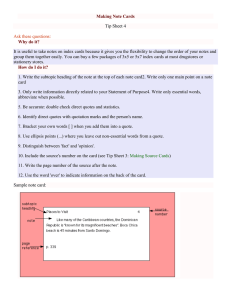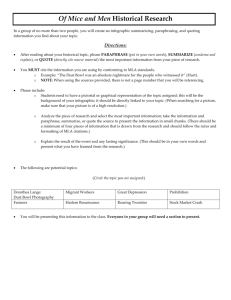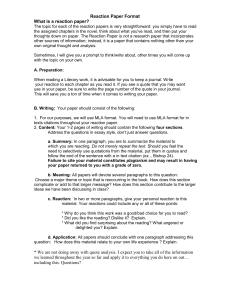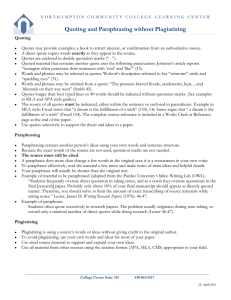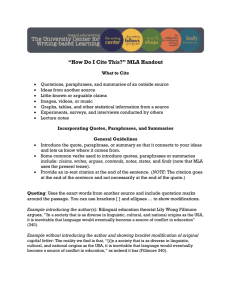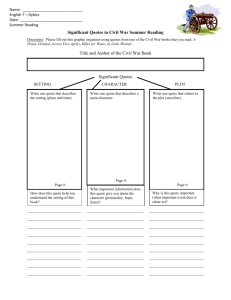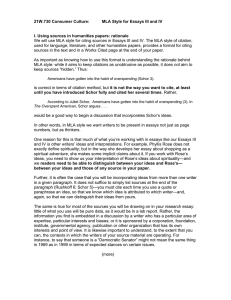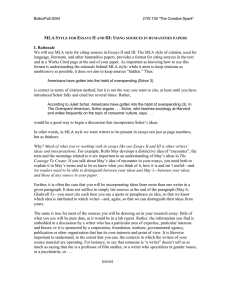Integrating Source Material
advertisement
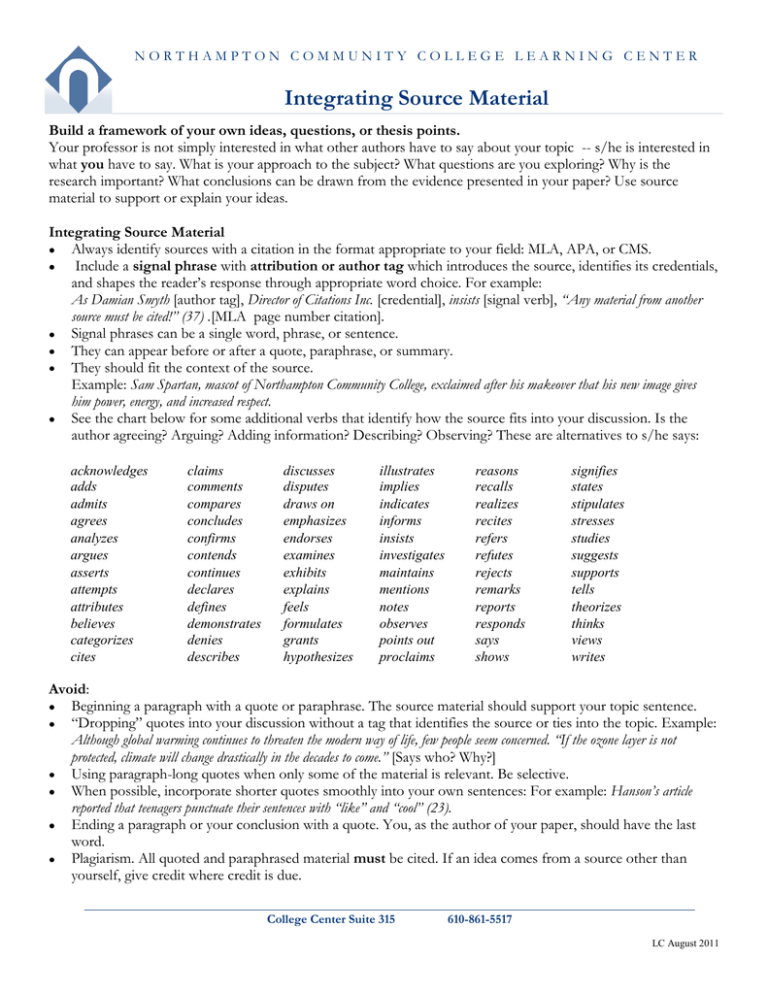
NORTHAMPTON COMMUNITY COLLEGE LEARNING CENTER Integrating Source Material Build a framework of your own ideas, questions, or thesis points. Your professor is not simply interested in what other authors have to say about your topic -- s/he is interested in what you have to say. What is your approach to the subject? What questions are you exploring? Why is the research important? What conclusions can be drawn from the evidence presented in your paper? Use source material to support or explain your ideas. Integrating Source Material Always identify sources with a citation in the format appropriate to your field: MLA, APA, or CMS. Include a signal phrase with attribution or author tag which introduces the source, identifies its credentials, and shapes the reader’s response through appropriate word choice. For example: As Damian Smyth [author tag], Director of Citations Inc. [credential], insists [signal verb], “Any material from another source must be cited!” (37) .[MLA page number citation]. Signal phrases can be a single word, phrase, or sentence. They can appear before or after a quote, paraphrase, or summary. They should fit the context of the source. Example: Sam Spartan, mascot of Northampton Community College, exclaimed after his makeover that his new image gives him power, energy, and increased respect. See the chart below for some additional verbs that identify how the source fits into your discussion. Is the author agreeing? Arguing? Adding information? Describing? Observing? These are alternatives to s/he says: acknowledges adds admits agrees analyzes argues asserts attempts attributes believes categorizes cites claims comments compares concludes confirms contends continues declares defines demonstrates denies describes discusses disputes draws on emphasizes endorses examines exhibits explains feels formulates grants hypothesizes illustrates implies indicates informs insists investigates maintains mentions notes observes points out proclaims reasons recalls realizes recites refers refutes rejects remarks reports responds says shows signifies states stipulates stresses studies suggests supports tells theorizes thinks views writes Avoid: Beginning a paragraph with a quote or paraphrase. The source material should support your topic sentence. “Dropping” quotes into your discussion without a tag that identifies the source or ties into the topic. Example: Although global warming continues to threaten the modern way of life, few people seem concerned. “If the ozone layer is not protected, climate will change drastically in the decades to come.” [Says who? Why?] Using paragraph-long quotes when only some of the material is relevant. Be selective. When possible, incorporate shorter quotes smoothly into your own sentences: For example: Hanson’s article reported that teenagers punctuate their sentences with “like” and “cool” (23). Ending a paragraph or your conclusion with a quote. You, as the author of your paper, should have the last word. Plagiarism. All quoted and paraphrased material must be cited. If an idea comes from a source other than yourself, give credit where credit is due. College Center Suite 315 610-861-5517 LC August 2011
